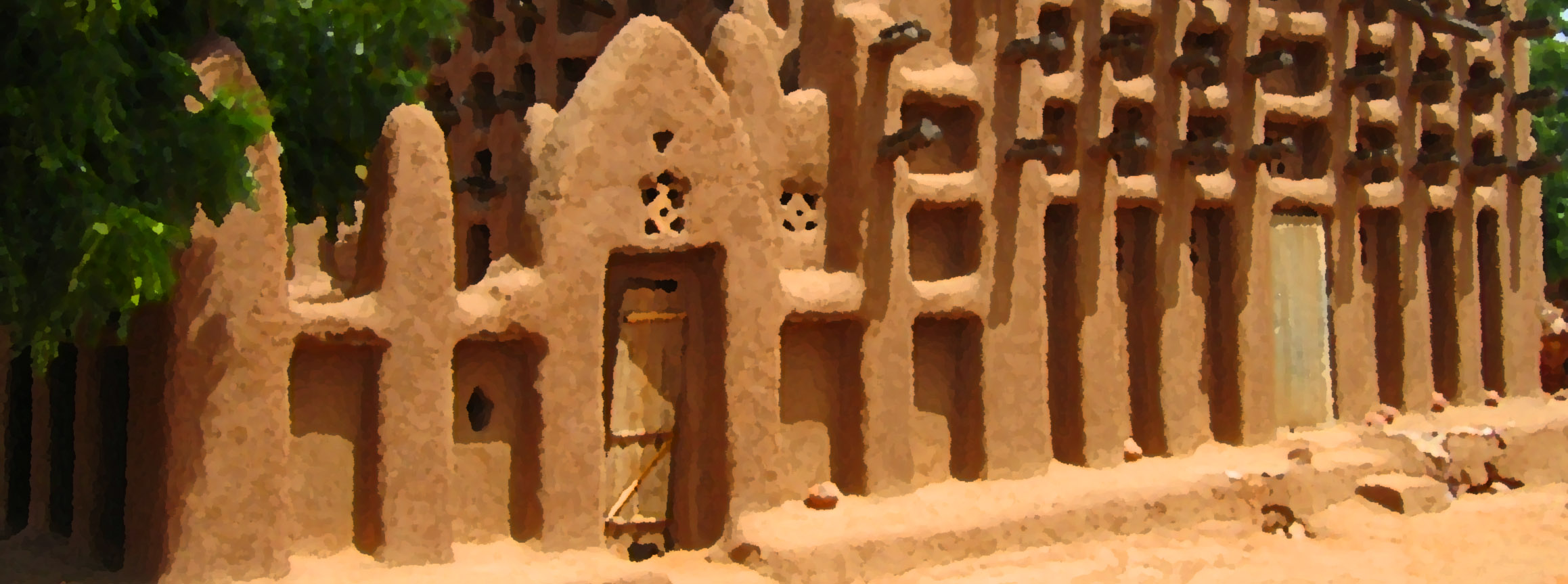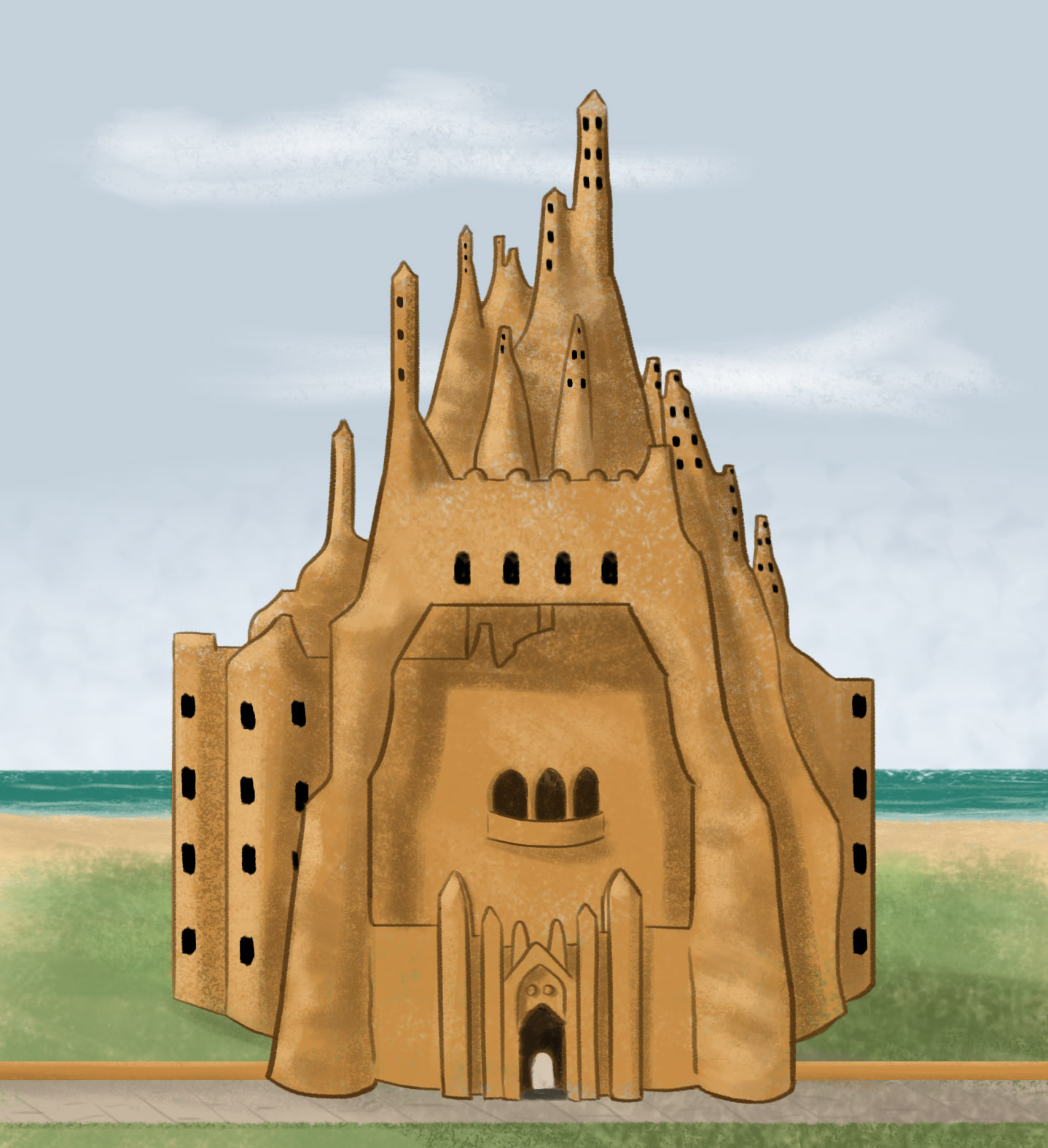Aalunus
Aalunus is better than Daqehi. At least, that's what Aalunusians would have you believe. The rivalry between the two cities goes back to the election of the chief of Daqehi to be king of the newly-formed Maloa. Aalunus, which had been the capital of the previous kingdom a few centuries earlier and was still the largest city in the region, believed the honour should go to them. Two centuries later, they're still bitter about this.
Daqehi, they say, is a greed-driven, out of the way, desert town out of touch with the more tropical bulk of Maloa, where they revel in sin. It's rundown, in the thrall of prostitutes, and even the church won't relocate their cathedral there. Aalunus is the rightful capital of Maloa.
Of course, if you ask anyone from Daqehi, they will say that Aalunus is a filthy, crime-ridden slum that can't get over their glory days. They wallow in the hypocrisy of shaming Daqehi for the sin it embraces while ignoring the poverty, crime, and dirt hidden just under the surface of the once-noble city.
Residents of the two cities hate each other. The only thing they hate more is people from outside of Maloa saying anything negative about the other, because hey, that's our target.
Daqehi, they say, is a greed-driven, out of the way, desert town out of touch with the more tropical bulk of Maloa, where they revel in sin. It's rundown, in the thrall of prostitutes, and even the church won't relocate their cathedral there. Aalunus is the rightful capital of Maloa.
Of course, if you ask anyone from Daqehi, they will say that Aalunus is a filthy, crime-ridden slum that can't get over their glory days. They wallow in the hypocrisy of shaming Daqehi for the sin it embraces while ignoring the poverty, crime, and dirt hidden just under the surface of the once-noble city.
Residents of the two cities hate each other. The only thing they hate more is people from outside of Maloa saying anything negative about the other, because hey, that's our target.
The Cathedral
Aalunus has been the seat of the Uyoyano church since before the Fourth Reckoning. Their cathedral by the beach was badly damaged during the flood of the Reckoning, but they rebuilt it stronger than ever. The presence of the church, and it being the home of the Grand Master Assassin, leads Aalunus to have a more pronounced religious presence than other areas of Maloa.
Every day at dawn and dusk, the horn at the top of the cathedral is blown to signal the start and end of the day. Traditionally, these are the business hours of the day. Shops don't open before the dawn horn, and business meetings arranged after the dusk horn are very uncouth and a sign of someone being greedy and overly work-oriented. Once a week, the dusk horn is two shorter notes in succession, which signal that a church service is about to begin. Although all churches do something similar, the horn at the cathedral is much larger and louder than others. The long, mournful note rings through the entire city. Newcomers to the city find it eerie, but locals find the day oddly empty when they travel to other parts and the sun sets without fanfare.
History
Aalunus was the capital city of the Konologa Kingdom before the Fourth Reckoning, when the kingdom dissolved. During the fourth age, it was a centre of trade. It rose to prominence as the mouth of the Agag river, allowing goods to travel deeper into the continent. The Uyoyano church built their main cathedral on the coast, so that it served as the capital of the religion as well as the state.
During the Reckoning, water levels in the river rose significantly, flooding most of the low-lying city. Those who didn't perish in the flood were at risk of Crocodogs, who roamed the newly flooded streets looking for a meal. The primary building material of the city was mud bricks, and the prolonged soak in floodwaters caused the foundations of many of the buildings to erode and collapse.
After the Reckoning, residents rebuilt. This time, the main buildings used foundations of stone, dragged to the site from quarries to the south. This was expensive and time-consuming, so most of the locals rebuilt their houses out of the same mud bricks and clay.
The Kolologa Kingdom held onto power for about twenty years, but steadily lost control of territory until the king was nothing more than a local chief. The chief of Aalunus remains in his great house, and is one of the more powerful Masters of the Land under the king of Maloa.
During the Reckoning, water levels in the river rose significantly, flooding most of the low-lying city. Those who didn't perish in the flood were at risk of Crocodogs, who roamed the newly flooded streets looking for a meal. The primary building material of the city was mud bricks, and the prolonged soak in floodwaters caused the foundations of many of the buildings to erode and collapse.
After the Reckoning, residents rebuilt. This time, the main buildings used foundations of stone, dragged to the site from quarries to the south. This was expensive and time-consuming, so most of the locals rebuilt their houses out of the same mud bricks and clay.
The Kolologa Kingdom held onto power for about twenty years, but steadily lost control of territory until the king was nothing more than a local chief. The chief of Aalunus remains in his great house, and is one of the more powerful Masters of the Land under the king of Maloa.
Architecture
The majority of the city is made from mud brick that is then covered with a smooth coat of clay. The result is a city made of smooth, reddish-brown buildings that seem to be sculpted out of the earth. Many of them are decorated by painting designs directly on the clay, or give texture with wooden posts sticking out from the clay. Windows are usually empty, with colourful curtains the only thing to keep out the rain. The main roads of the city are wide enough for mastodons to drag carts, and are lined with palm trees. Throughout the city, enormous baobab trees form the centres of plazas and roundabouts; it's not only bad luck to cut one down, but a huge undertaking, so they built the city around them.
Geography
Aalunus is located at the mouth of the Agag River. Where the Agag meets the sea, it widens and turns into a mangrove swamp on the north bank. The swamp stretches along the coast before it merges with the Nguk Forest.
The estuary is too salty to be drinkable water, but small streams of rainwater running to meet the Agag provide fresh water. The city is on the coast, with a palm-tree lined beach along the west edge of the city. Surrounding the city are the flat, sparsley forested grasslands of central Kaabara. Baobab, acacia, and Ishud Trees are common in the area.
The estuary is too salty to be drinkable water, but small streams of rainwater running to meet the Agag provide fresh water. The city is on the coast, with a palm-tree lined beach along the west edge of the city. Surrounding the city are the flat, sparsley forested grasslands of central Kaabara. Baobab, acacia, and Ishud Trees are common in the area.



